POT1 recruits and regulates CST-Polα/primase at human telomeres
- PMID: 38838667
- PMCID: PMC11246235
- DOI: 10.1016/j.cell.2024.05.002
POT1 recruits and regulates CST-Polα/primase at human telomeres
Abstract
Telomere maintenance requires the extension of the G-rich telomeric repeat strand by telomerase and the fill-in synthesis of the C-rich strand by Polα/primase. At telomeres, Polα/primase is bound to Ctc1/Stn1/Ten1 (CST), a single-stranded DNA-binding complex. Like mutations in telomerase, mutations affecting CST-Polα/primase result in pathological telomere shortening and cause a telomere biology disorder, Coats plus (CP). We determined cryogenic electron microscopy structures of human CST bound to the shelterin heterodimer POT1/TPP1 that reveal how CST is recruited to telomeres by POT1. Our findings suggest that POT1 hinge phosphorylation is required for CST recruitment, and the complex is formed through conserved interactions involving several residues mutated in CP. Our structural and biochemical data suggest that phosphorylated POT1 holds CST-Polα/primase in an inactive, autoinhibited state until telomerase has extended the telomere ends. We propose that dephosphorylation of POT1 releases CST-Polα/primase into an active state that completes telomere replication through fill-in synthesis.
Keywords: CST; DNA replication; DNA-protein complex; POT1; cryo-EM; end-replication problem; phospho-regulation; polymerase α/primase; shelterin; telomere.
Published by Elsevier Inc.
Conflict of interest statement
Declaration of interests T.R.C. is a member of the SAB of Storm Therapeutics, Eikon Therapeutics, and SomaLogic, Inc.
Figures
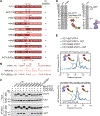
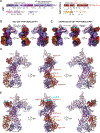
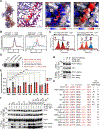
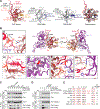
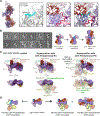


Update of
-
POT1 recruits and regulates CST-Polα/Primase at human telomeres.bioRxiv [Preprint]. 2023 Oct 26:2023.05.08.539880. doi: 10.1101/2023.05.08.539880. bioRxiv. 2023. Update in: Cell. 2024 Jul 11;187(14):3638-3651.e18. doi: 10.1016/j.cell.2024.05.002. PMID: 37215005 Free PMC article. Updated. Preprint.
References
-
- de Lange T (2018). Shelterin-Mediated Telomere Protection. Annu Rev Genet 52, 223–247. - PubMed
MeSH terms
Substances
Grants and funding
LinkOut - more resources
Full Text Sources
Molecular Biology Databases
Miscellaneous

